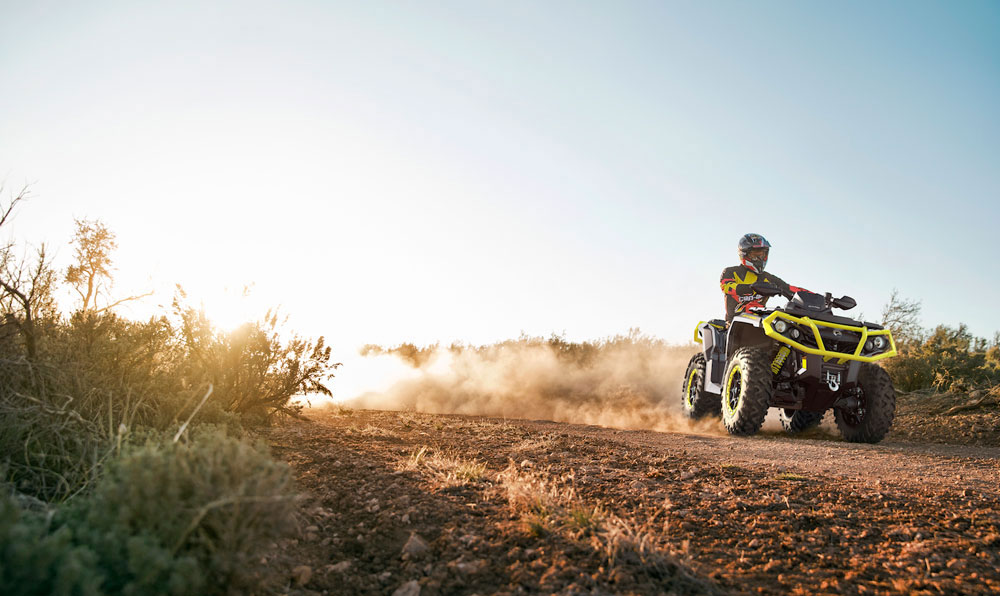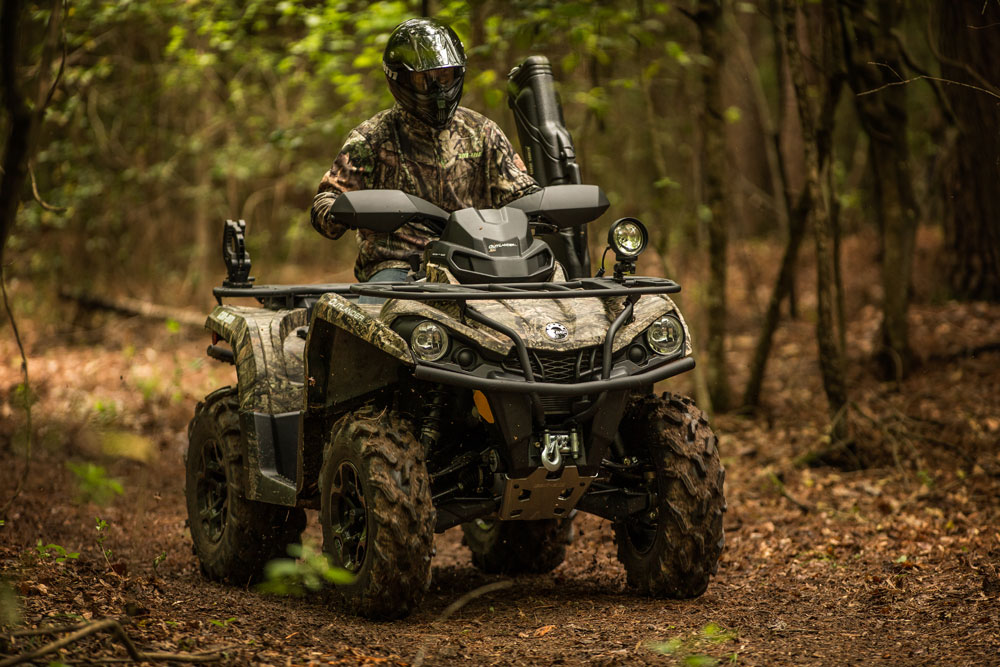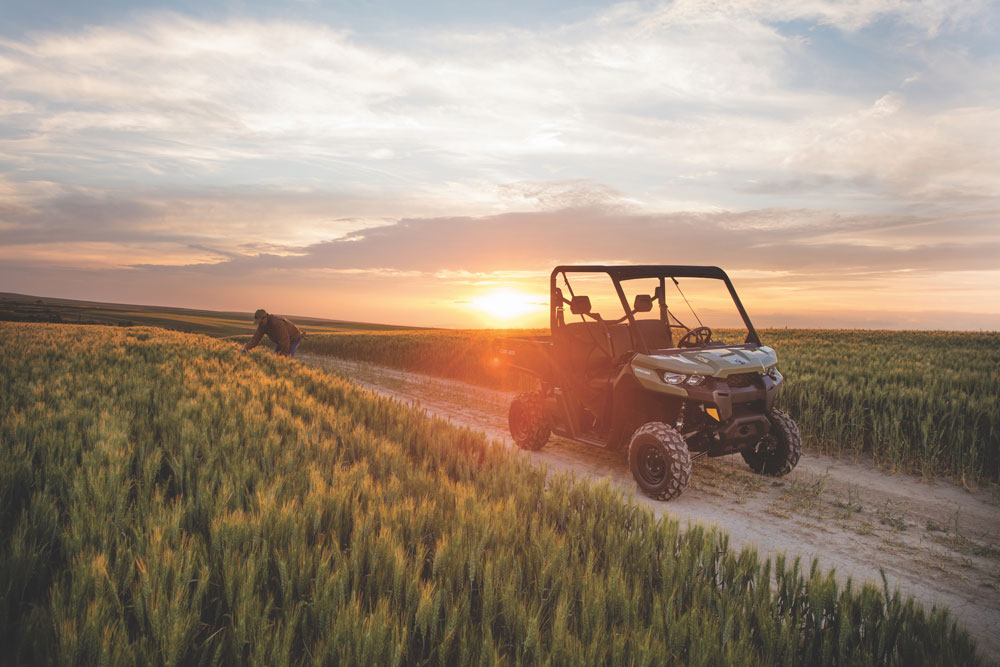
For most people, driving on a rough and bumpy surface is a nightmare, but for people who enjoy off-roading on ATVs, it’s the perfect scenario. All-terrain vehicles (ATVs) are specially designed for riding on uneven terrain and are a great way to enjoy the outdoors and take in the natural scenery. They’re most often used for recreation but are sometimes used for working on farms, ranches, and hunting properties.
As with any machine, it’s important that you understand how to safely operate an ATV before riding one. ATVs can be difficult to control, especially at high speeds and, with the unpredictability of natural terrain, accidents such as rollovers and collisions do happen.
Whether you’re using an ATV to complete tasks around your property or to enjoy weekend rides on the trail, make sure you know how to properly and safely operate your vehicle before embarking on your off-road adventure.
What Is an ATV?
An all-terrain vehicle, also known as an “ATV,” is a motorized vehicle that is designed for off-road travel. Most standard ATVs feature four low-pressure tires, seating, and handlebars for steering. However, ATVs come in a variety of different shapes and sizes depending on their use. Whether you want to use it for racing, hunting, or another purpose, there are many different ATV options to choose from.
Some of the most common types of ATVs include:
Utility ATVs – The most popular type of all-terrain vehicle, utility ATVs are commonly used by gamekeepers and hunters to travel longer distances on rugged terrain, often while carrying cargo or equipment.
Sport ATVs – Sport ATVs are more lightweight and much quicker than utility ATVs. They’re most often used for racing and are designed to handle speed, high jumps, and fast turns.
Side-by-Sides – A side-by-side (SxS) ATV is similar to a golf car but has a stronger motor and smoother suspension. They’re able to carry multiple passengers and have room to carry more cargo than other ATVs.
Children’s ATVs – ATVs aren’t “one size fits all.” Children’s ATVs are smaller than other types of ATVs and are designed to travel at much slower speeds.
Dangers of Off-Roading

Operating an ATV can be fun and enjoyable, but if you don’t understand how the machine works, how to operate it safely, and what to do in the event of an emergency, it can be extremely dangerous.
One of the most common accidents associated with off-roading is rolling over, which can occur when an ATV is on unstable terrain. Many accidents associated with ATV use are the result of negligence on the part of the driver, often because of reckless operation of the vehicle and drunk driving. When off-roading on your ATV, make sure to always wear protective gear, follow the law and safety requirements, and never drink and drive.
Off-Roading Safety Tips
There’s no doubt that operating an ATV can be fun, even when it’s being used for work, but it’s important to remember that ATVs aren’t toys—they’re machines. According to a 2017 report by the Consumer Product Safety Commission, an estimated total of 93,800 ATV-related injuries and 295 deaths were reported in the United States. Safety is paramount when it comes to operating all-terrain vehicles; here are a few tips to consider before riding:
Take a safety course – Before off-roading, consider taking a driver’s education court that is geared towards ATV use. You’ll learn how to properly operate an ATV, basic safety techniques, riding strategies, and local laws regarding ATV use. The ATV Safety Institute offers hands-on courses to prepare riders ages six and older for proper ATV use.
Wear proper gear – Having the right protective gear is a must when off-roading. Helmets are the most important piece of protective equipment you can own and can mean the difference between life and death or serious injury. Most states require them when operating an ATV or motorcycle. You should always have goggles or another form of eye protection to keep rocks, dirt, and other debris out of your eyes and wear long pants and sleeves, gloves, and closed-toed shoes to protect yourself from scrapes and cuts.
Stay off the road – ATVs are designed for off-road use, meaning you should avoid driving them on highways and other paved surfaces. Many ATV-related deaths occur as a result of someone riding an ATV on a paved roadway.
Inspect your vehicle – Before you ride, always inspect your ATV to make sure it’s in working order and avoid unexpected accidents. Make sure you have enough gas and that your tires have air, and check the handlebars for mobility and steering issues.
Drive responsibly – Again, ATVs are machines, not toys, so don’t play around while using them. Always drive at safe speeds, pay attention to your surroundings, and watch for oncoming traffic. Most ATVs are designed for one passenger only. Unless your ATV is designed for two-passenger use, you should never let another passenger ride with you. And, finally, it goes without saying, but you should NEVER operate any vehicle under the influence of alcohol or drugs as this impairs your judgment and reaction time.
Get insurance – Accidents happen, so make sure you have insurance coverage to protect yourself and your ATV.

In Case of Emergency…
Sooner or later, you’re bound to run into problems with your ATV. Perhaps your vehicle gets stuck or experiences a mechanical issue, or worse, you have an accident and you’re injured. Whatever the circumstance, you’ll need to make sure you’re always prepared in the event of an emergency—especially one that leaves you stranded in the middle of the woods.
If you have a cell phone with good service, call someone for help and be as detailed as possible when describing your location. Always have a first aid kit on hand, in case of injury, and a supply of water and food in the event you have to stay put until someone can get you. Most importantly, stay calm until help arrives!



























